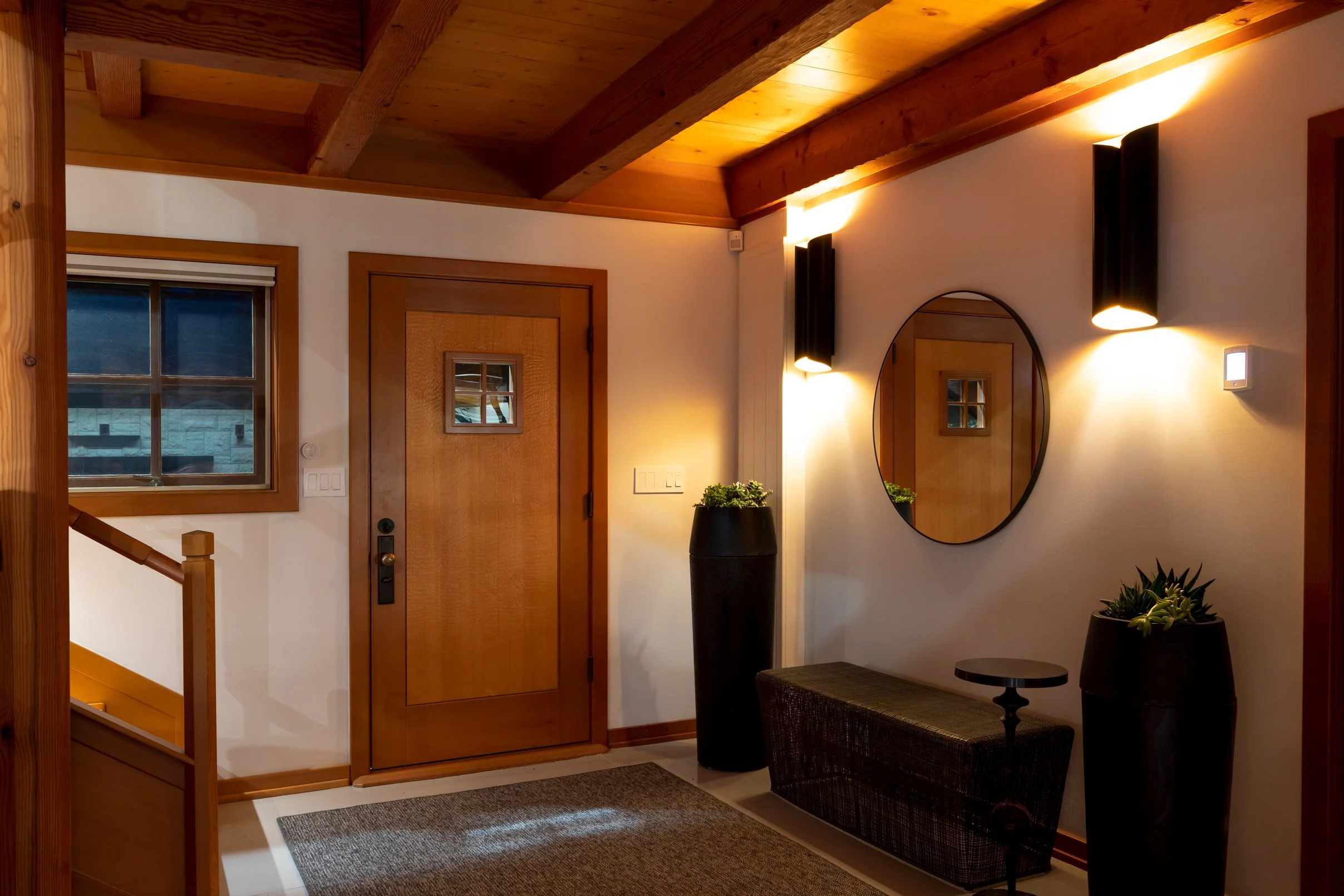EXCLUSIVE CONTENT
Guides and Design Support for Instagram Followers!
YOUR DESIGNER
Paige Gray, BA ID
5-STEP Guide:
Coordinating Your Exterior Home Finishes with Interior Design
Introduction:
When designing a home, creating a harmonious flow between the exterior and interior is key to achieving a cohesive, balanced aesthetic. The exterior of your home sets the tone and provides the first impression, while the interior is where you spend your time and make personal style choices. Coordinating these two elements ensures your home feels unified, welcoming, and thoughtfully designed from the outside in. This guide will take you step-by-step through the process of blending your home’s exterior finishes with your interior design scheme.
Step 1:
Establish a Unified ColoUr Palette
What to Do: Start by selecting a primary color palette that works both inside and outside. If your exterior features neutral tones like grays, whites, or beiges, carry those through inside with similar wall colors, fabrics, and finishes. Accent colors (such as navy, mustard, or a warm wood tone) can tie both spaces together.
Why It Works: A consistent color palette creates visual harmony between the inside and outside, ensuring your home feels well-thought-out and cohesive.
Tip: Use the 60-30-10 rule for color distribution: 60% dominant color (walls or siding), 30% secondary color (upholstery or furniture), and 10% accent color (accessories, throw pillows, or rugs). This ensures a balanced color flow between both spaces.
Step 2:
Match Materials and Textures
What to Do: Choose materials for both your exterior and interior spaces that complement each other. If your exterior features natural wood siding or stone, reflect that indoors with similar materials, like wood flooring, stone countertops, or wooden furniture. This creates a sense of continuity and connection between the two spaces.
Why It Works: Matching materials helps create a seamless connection between the exterior and interior, reinforcing the feeling of cohesion and flow throughout the home.
Tip: If you have a textural contrast (e.g., a sleek, modern exterior with smooth concrete), balance it with softer, warmer interior textures like linen or wool to create contrast while maintaining a unified theme.
Step 3:
Align Architectural Styles and Features
What to Do: Ensure your architectural elements reflect the same style both inside and out. For example, a modern exterior with clean lines and glass can be mirrored with minimalist furniture and metal finishes inside. Traditional exteriors with elements like gabled roofs or brickwork can be complemented by classic wood furniture and vintage-inspired accents inside.
Why It Works: Matching architectural styles between interior and exterior creates a visual dialogue that ties the whole house together, making it feel more unified.
Tip: If you have a more eclectic exterior design, try mixing and matching interior styles (modern with traditional, for example) but keep the material finishes consistent to ensure the design feels intentional.
Step 4:
Incorporate Natural Elements and Views
What to Do: Integrate natural materials like wood, stone, and plants both indoors and outdoors. Maximize the natural light coming in from the exterior by positioning your interior furnishings and decor to highlight views of your landscape or garden.
Why It Works: Bringing the outdoors inside through natural elements and framing views to nature creates a sense of openness and connectedness between your interior and exterior spaces.
Tip: Consider using large windows or sliding glass doors to create a smooth visual transition from inside to outside, and enhance this connection with indoor plants or natural textures like wicker, wood, and stone.
Step 5: Create Flow with Transition Spaces
What to Do: Transition spaces such as your entryway, hallway, or mudroom are essential in linking the exterior and interior. Use similar materials, colors, or design elements in these areas to create a visual bridge. For example, if your exterior features a wooden front door, echo that material with wood accents or a wooden console table in your entryway.
Why It Works: These spaces help bridge the gap between the exterior and interior, ensuring that there’s a seamless transition from the outside to the inside, creating an inviting and connected environment.
Tip: Add transitional decor such as matching doormats, wall art, or lighting fixtures to reinforce the connection between your home’s exterior and interior, making your entryway feel like an extension of the outdoors.





